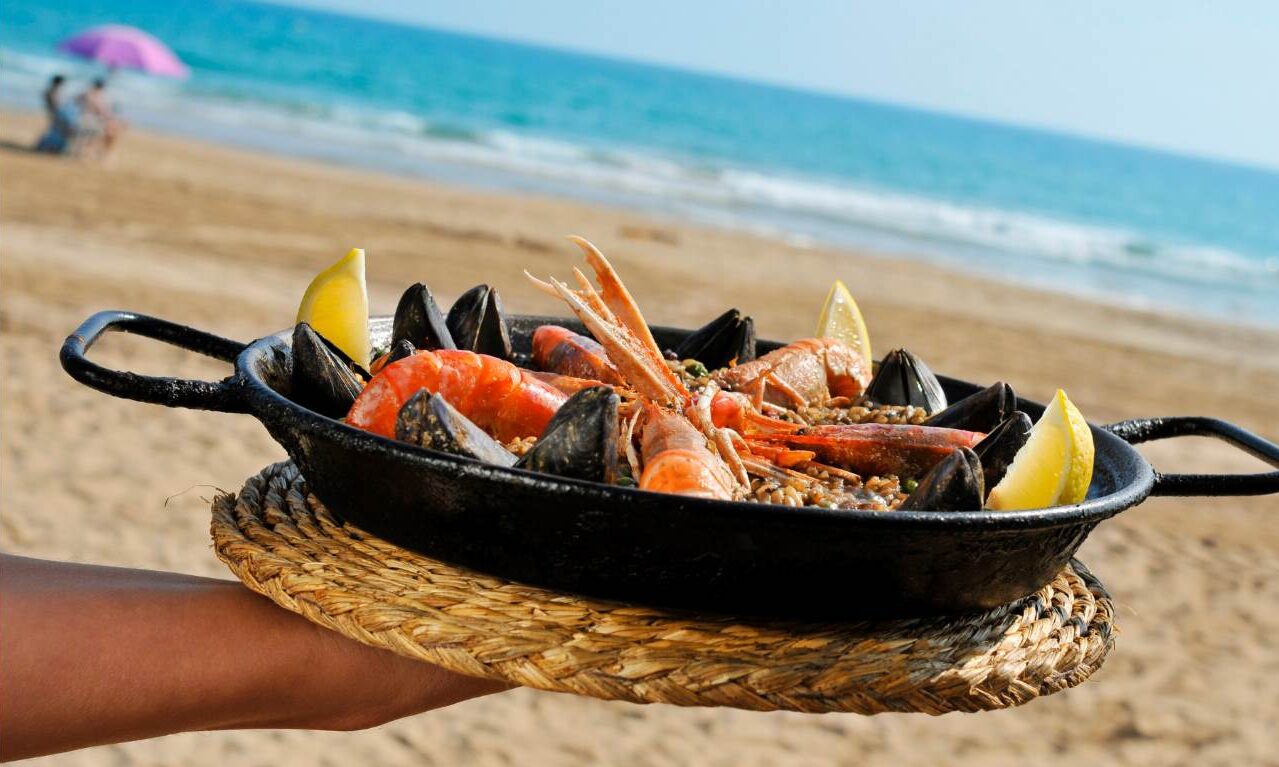There are many flamenco singers who, in one way or another, mention gastronomy in their songs. There are those with a festive tone, those with a gastronomic element that is conveyed in the form of a whine, those with an ingredient on a shopping list, or those that praise a drink.

Échale guindas al pavo was first heard in 1936 sung by Imperio Argentina in a successful film of the time, Morena Clara. The song illustrates the supposed gypsy picaresque through a story where the turkey has a special role, and in which other ingredients such as sugar, cinnamon and cloves are also mentioned. In 1954, Lola Flores brought the song back into fashion by performing it in a remake of the film of the same name.
This songhad a third period of glory in 1970 when it was revived by singer Rosa Morena, who made it one of the most successful flamenco pop songs of the seventies.

Flamenco songs that were born with a different style
Did you know that the famous Sarandonga que published by Lolita in 2001 was based on a Cuban song created in 1950? In 1966, Antonio González El Pescaílla, Lolita’s father, adapted it to the rumba style, changing some words such as ñame or jutías for rice and beans. Although we will always remember that ode to rice with cod that the daughter of La Faraona sang with such grace and joy.
In Los flamencos cantan a Sabina, an album released in 2012, Antonio Carmona reinterprets in flamenco style. Y sin embargo, a famous song by the composer from Jaén and an ambivalent chronicle of a passionate love that is unfaithful. In the song, red wine and French champagne (a pleonasm for the sake of melody) have special prominence.
On the same LP, Pitingo reminds us in a flamenco key how the güisqui on the rocks sounds, whichthe master Sabina mentions in the lyrics of 19 días y 500 noches as a measure of time.
Flamenco pure and simple
Salud antes que dinero (Health before money) is a song that forms part of the album Caminito de Totana by the late Camarón de la Isla, and in it, to the beat of a quejío, the man from Cádiz compares himself to a beggar “asking for bread to eat”. The song, a fandango – by many accounts one of the most primitive flamenco palos – was a collaboration between Paco de Lucía and Camarón.
In the 1940s, Miguel de Molina popularised Dale arroz, a song similar to a vaudeville. The lyrics narrate the tribulations of a newlywed in the kitchen and her relationship with a neighbour and her mother-in-law. There is not only rice in it; mojama, chilli peppers, chocolate and water are also part of the lyrics.
Fun tunes with gastronomic memories
De coco, piña, limón and menta are the Caramelos that the duo Los Amaya popularised in 1971 in song format. A big hit at the time of Catalan rumba!
Just thirty years later, in 2001, La lista de la compra, a song by La Cabra Mecánica in collaboration with María Jiménez, was sung for the first time in Operación Triunfo. Very catchy, it tells a love story that is not affected by economic hardship. The gastronomic note is set by a tuna in vegetable oil on offer: that is, with you, bread and onions!

And if you thought that this was the end of this blog post, here’s a surprise for you: an authoritative study by the University of Oxford claims that paella tastes better with flamenco. We thought so…
